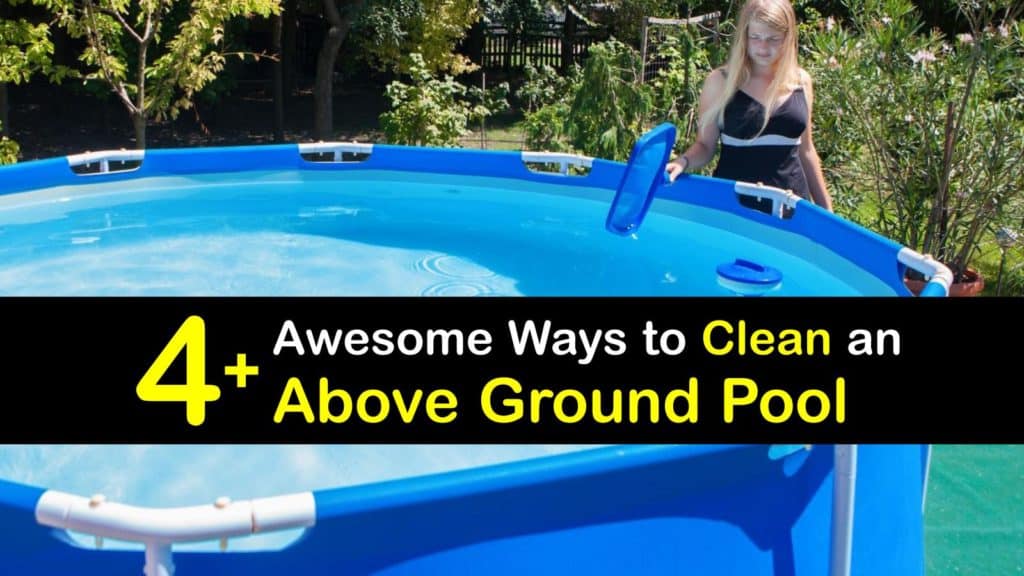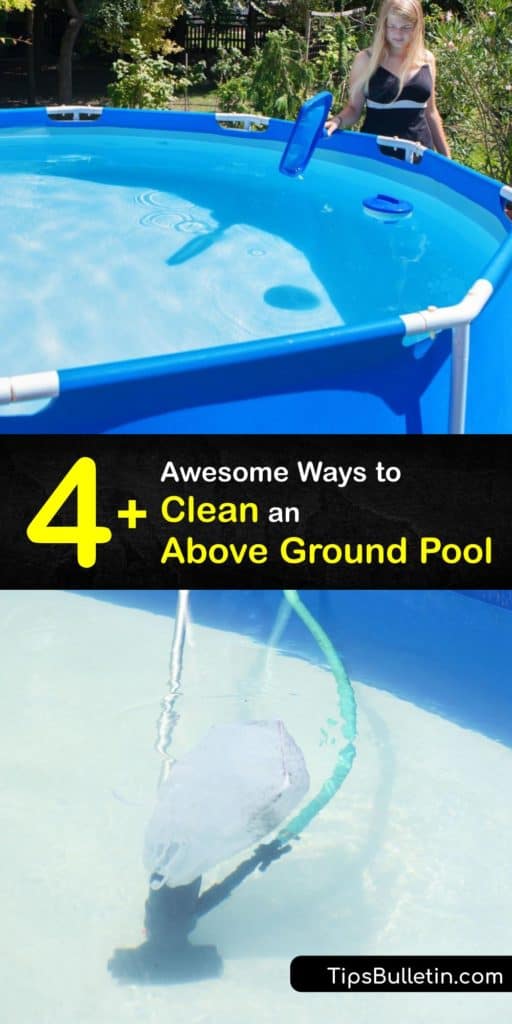Easy Maitenance Ideas on Above Ground Pools
An above ground pool is a perfect way to enjoy the warm weather outdoors with the convenience of your own home. Some people think that keeping a clean swimming pool is challenging; however, learning how to clean an above ground pool is manageable when you have the right tools.
An essential part of managing an above ground pool is a proper pool maintenance routine so the water stays fresh and free of harmful bacteria.
Whether your pool has algae growth, cloudy water, or gunk buildup, we teach you how to utilize an excellent pool cleaner. It is crucial to remember that above ground pool cleaning is slightly different from in-ground pool cleaning.
The pool water in above ground pools takes a little longer to completely clear algae and debris. If you are looking to clear a cloudy above ground pool, this article describes how to do so efficiently.
Pool cleaning is necessary, so the pool's water is safe for swimming. Continue reading to find out amazing ways to clean your above ground pool.

- How Above Ground Pool Filters Work
- How to Clean an Above Ground Pool Free of Algae
- Clear a Cloudy Above Ground Pool with a Vacuum
- Above Ground Pool Cleaning with Baking Soda
- How to Measure the Chlorine Levels in Your Pool
- The Importance of Backwashing Your Pool
How Above Ground Pool Filters Work
Before choosing an above ground pool cleaning method, it is helpful to understand how your pool filter works.
An above ground pool pump filters water with a sand filter, removing organic materials from the water like dirt, plants, insects, sunscreen, and hair.
Although sand filtration is the most popular, there are two other filters for above ground pools. A cartridge filter and a diatomaceous earth filter are the two different options for a filter system.
No matter what filtration system your pool has, the cleaning tools we show you work well.
How to Clean an Above Ground Pool Free of Algae
No one wants to swim in a pool with excess algae in the water. To clean a green above ground pool and get rid of green algae in the pool, all that is needed is liquid chlorine and a pool pump.
tb1234
To get rid of algae in pools, start by adding your liquid chlorine to the water. This amount of chlorine destroys living algae in your pool's water. The next step to remove algae from an above ground pool is to utilize your pool pump.
Run your pool pump or filter for 12 hours to let the algae settle to the bottom of the pool. The pump pulls water from the pool's skimmer and main drains and flows it through the filter, removing algae from pool bottom as well as other contaminants.
Another option is to use an algaecide to eliminate unwanted algae. Make sure only to use one algae removing method and not combine them.
Clear a Cloudy Above Ground Pool with a Vacuum
An essential part of above ground pool care is vacuuming. A pool vacuum connects to the skimmer or a particular suction line. The vacuum head moves around the pool to collect debris, leaves, and other sediments found in swimming pools.
Of course, proper landscaping around the pool can help keep out leaves and branches. Choose some of the best trees to plant around a pool to minimize this type of maintenance.
When it comes to pool vacuums, there are two different kinds – manual and automatic. Pool owners usually prefer an automated pool vacuum because the vacuum does the work for you with minimal human interaction. To vacuum an above ground pool manually, you must guide the machine around the bottom of the pool much like you vacuum a rug.
For a consistent way to clean a pool, run your pool vacuum every day to collect any excess debris that falls into the water.
Both types of pool vacuums are safe for fresh and saltwater pools. With an automatic pool vacuum, above ground pool cleaning is easier.
Above Ground Pool Cleaning with Baking Soda
If your pool has cloudy water, the pH level is not where it is supposed to be. To clear a cloudy above ground pool, the pH levels must fall between 7.3 and 7.6.
When pH levels climb above 7.8, there is too much alkalinity in the water, which reduces how effective chlorine is. To clear cloudy water in above ground pool systems, use baking soda to balance the pH levels.
Baking soda is an alkalinity increaser and has a natural pH of 8.0, allowing your pool water to have balanced pH and alkalinity levels.
When it comes to balancing pool water pH levels, the general rule of thumb is to incorporate one and a half pounds of baking soda for every 10,000 gallons of water to raise the alkalinity by ten ppm.
How to keep a pool clean involves pouring the baking soda directly into the pool's water, ensuring that you spread out the powder across the pool.
You can also clean a jetted tub with vinegar and baking soda to eliminate stains and sanitize the tub. Use the same solution as a patio furniture wash, depending on the material. It's great for plastic.
How to Measure the Chlorine Levels in Your Pool
Another thing to help clear a cloudy above ground pool is to ensure the chlorine level is balanced correctly. Test strips indicate the ppm chlorine levels. Hold the strip in the water for a few seconds, then match the color on the strip with the ppm chart.
Although bleach can act as a sanitizer for the pool, it is best to use chlorine. Using either chlorine tablets or granular chlorine, pre-dissolve the measured amount in a bucket and pour the cleaner along the pool liner for the way to shock a pool.
Never pour chlorine directly into the skimmer. When a pool has the right amount of chlorine in the water, it reduces the chances of red eyes and swimmer's itch.
The Importance of Backwashing Your Pool
Backwashing your pool water reverses water flow through the filter, allowing debris and dirt to dislodge through the process.
It is best to backwash your pool once a week for the best above ground pool cleaning practices, generally after you have vacuumed the pool. Turn off the pool pump and switch the valve to its backwash position.
After running water for two minutes, turn off the pump and change it to the rinse position. Run the water for another minute before turning the pump off.
Before you turn the pump back on, reset the filter valve. With a strict pool maintenance routine, understanding how to clean an above ground pool is simpler than it initially appears.
Companies like Intex have been making innovative above ground pools for several years, which provide a fun way to enjoy the heat while being less expensive than in-ground pools.
Above ground pool cleaning is an essential part of keeping the water clean and safe to swim in. Chlorine levels help kill harmful bacteria, while baking soda helps clear a cloud above ground pool.

If you discovered how to clean an above ground pool, share these tips for pool cleaning with your neighbors and pool owners on Pinterest and Facebook.
Source: https://www.tipsbulletin.com/how-to-clean-an-above-ground-pool/
0 Response to "Easy Maitenance Ideas on Above Ground Pools"
Post a Comment